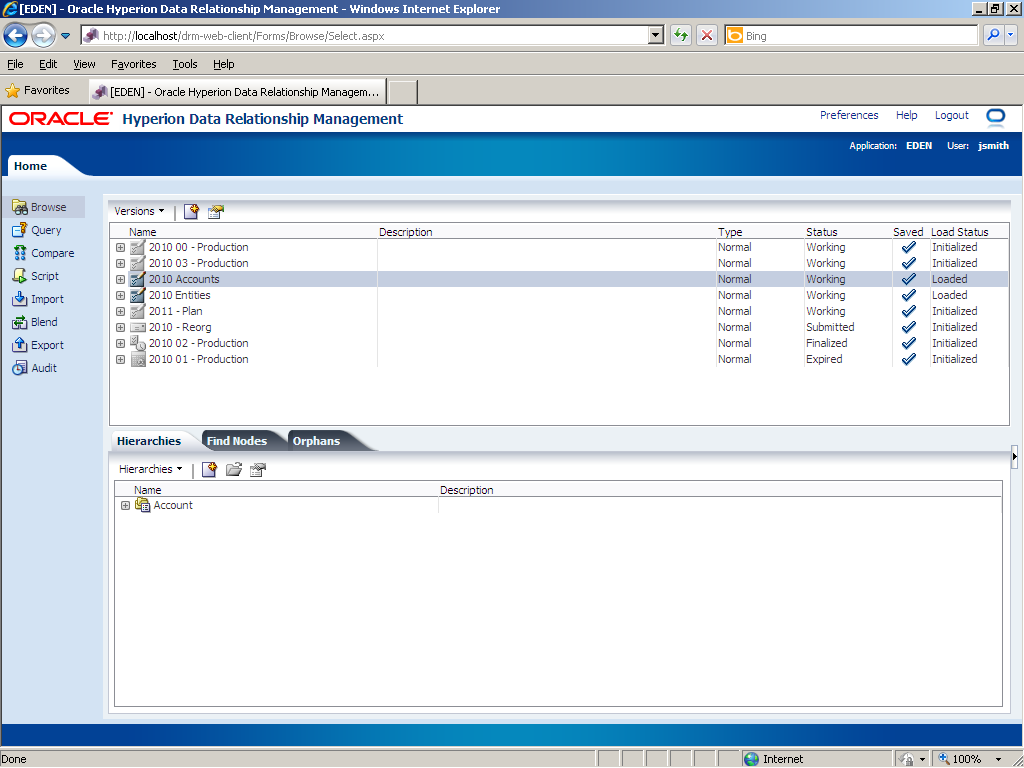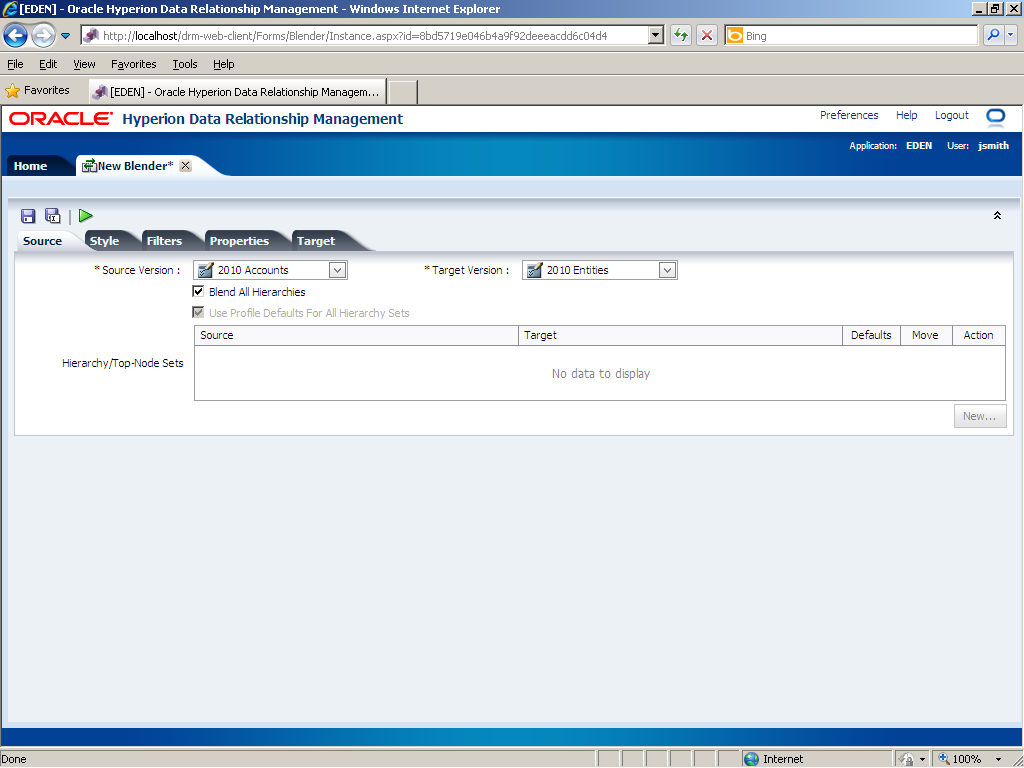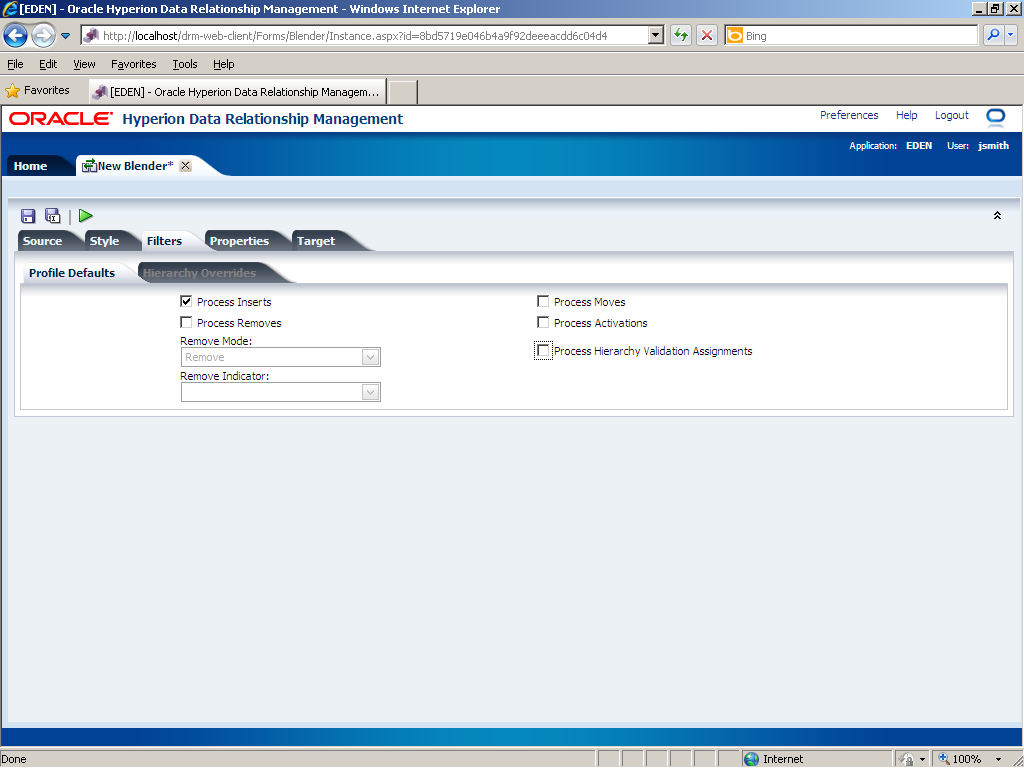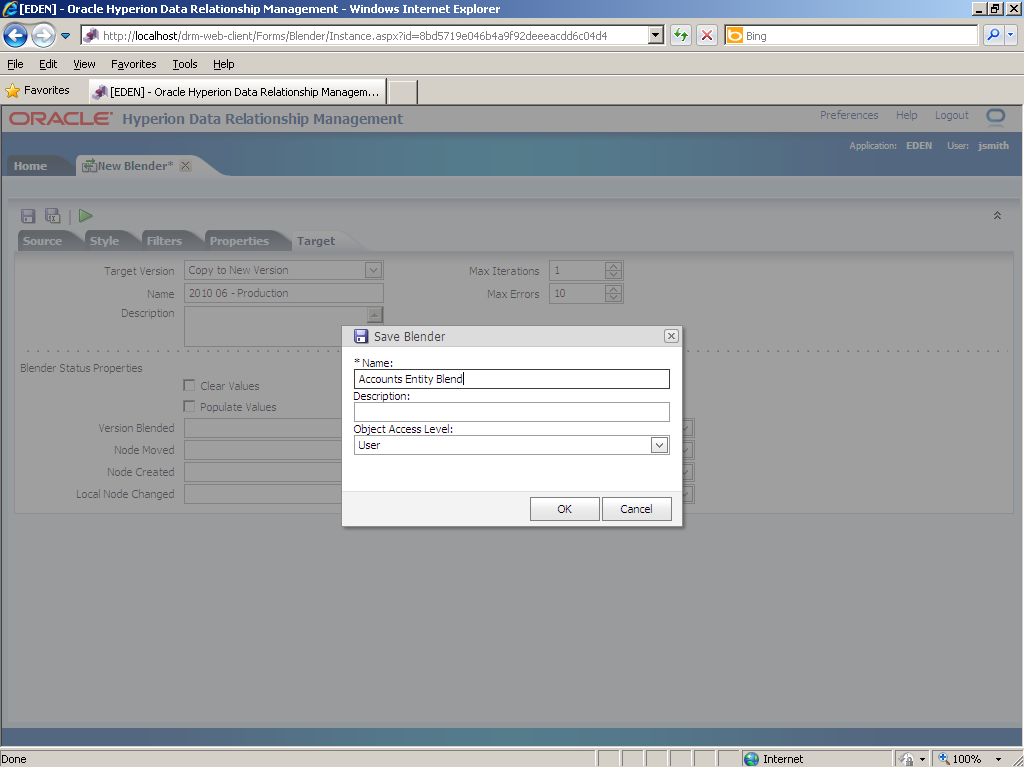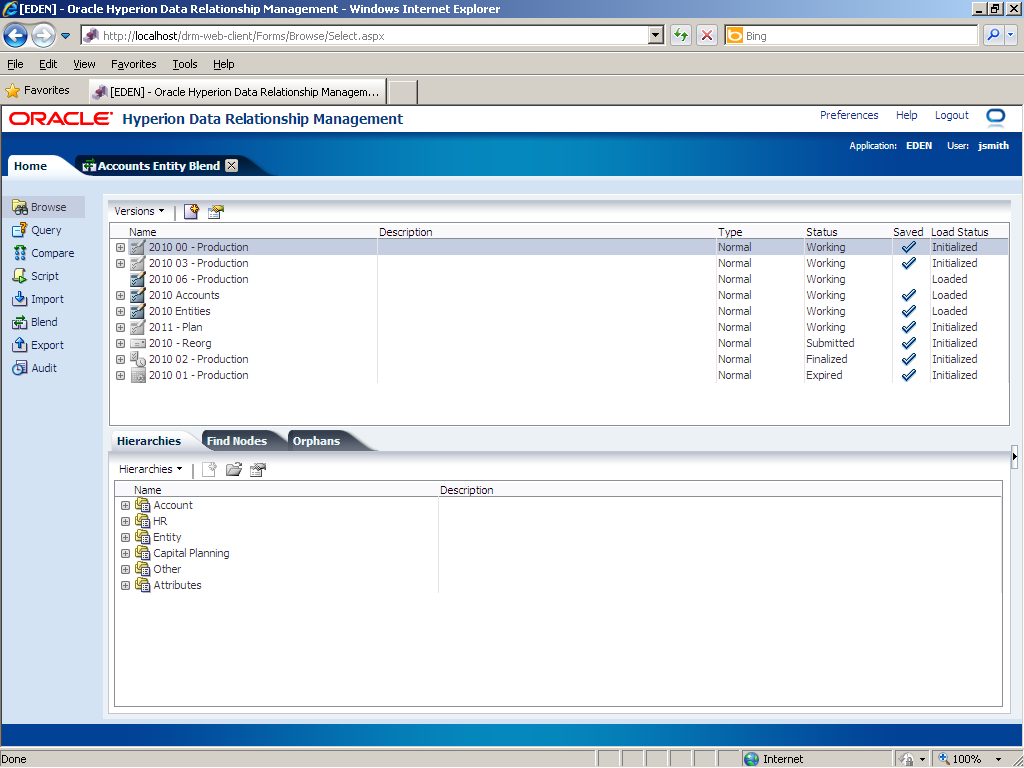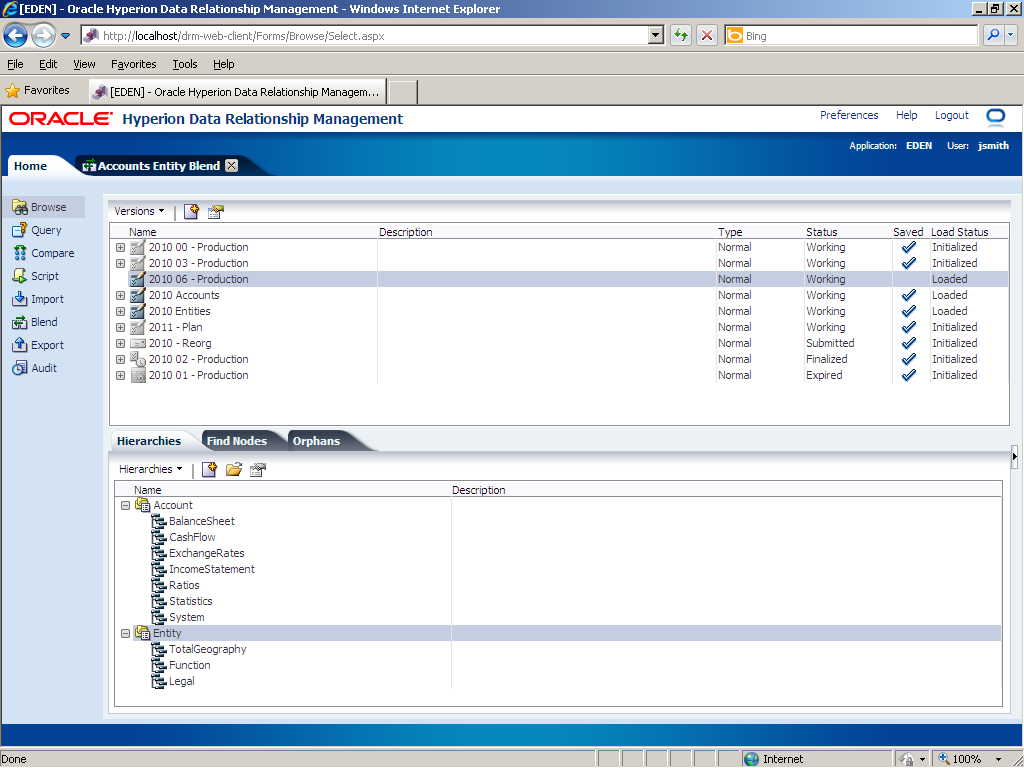Adding Different Hierarchies to the Same Version
Purpose
This tutorial covers how to blend hierarchies from two different versions into a new version.
Time to Complete
Approximately 20 min.
Overview
With a blender, you can add unrelated hierarchies from two different versions into a new version. For example, you blend two account hierarchies from version1 with two entity hierarchies from version2 to result in four hierarchies in version3. This type of blender is easy to configure and analyze because the nodes do not overlap between the hierarchies in the source and target versions.
For this type of blender, you configure the following blender wizard tabs in this manner:
- Source—Select the hierarchies that you want to combine from the source version with the hierarchies in the target version. If you want to include all hierarchies from both versions, leave the Blend All Hierarchies option enabled.
- Style—Enable the Allow Hierarchy Creation and Process Structure options. If you want to include property values from the source version, also enable the Process Properties option.
- Filters—Enable the Process Inserts option to allow nodes to be added to the hierarchies that are created by the blender.
- Properties—Choose the properties that you want to copy from the source version, if needed.
- Target—Configure a new version to contain the hierarchies from the source and target versions.
In this tutorial, you add hierarchies from the Accounts version and the Entities version into a new version Production.
Prerequisites
Before starting this tutorial, you should have access to or have installed Oracle Hyperion Enterprise Performance Management 11.1.2.1.0 and Oracle Hyperion Data Relationship Management, Fusion Edition 11.1.2.1.0.
Exploring Source Versions
In this topic, you explore the source versions.
. |
Begin in the Browse task group. Use the Browse task group to manage versions and hierarchies.
|
|---|---|
. |
View the hierarchies that you are going to blend. Begin by viewing hierarchies in the 2010 Accounts version. Click 2010 Accounts.
|
. |
Expand the Account hierarchy group.
The 2010 Accounts version consists of one hierarchy group (Account) that contains seven hierarchies.
|
. |
View the hierarchies in the 2010 Entities version. Click 2010 Entities.
|
. |
Expand the Entity hierarchy group.
The 2010 Entities version consists of one hierarchy group (Entity) that contains three hierarchies. Note: These hierarchies are different than those in the 2010 Accounts hierarchy.
|
Blending Versions
In this topic, you create a blender that combines the hierarchies in the 2010 Accounts and 2010 Entities versions into a new version called 2010 06 - Production.
. |
Navigate to the Blend task group.
Use the Blend task group to create, copy, and delete blenders.
|
|---|---|
. |
Click the New Blender button.
Use the blender wizard to configure the source, style, filters, properties, and target for your blender. You begin on the Source tab.
|
. |
Use the Source tab to select the source and target versions for the blender. You can blend all hierarchies from both versions or selected hierarchies from the source version. In this example, you blend all hierarchies from both versions. Perform the following actions on the Source tab:
|
. |
Click the Style tab.
Use the Style tab to select structure and property options for your blender.
|
. |
Perform the following actions on the Style tab:
|
. |
Click the Filters tab.
Use the Filters tab to select processing options for the profile default. You can also specify hierarchy overrides, if needed.
|
. |
Perform the following actions on the Filters tab:
|
. |
Click the Properties tab.
Use the Properties tab to configure default properties to be blended for the blender profile. You can also configure hierarchy overrides, if necessary.
|
. |
Perform the following actions on the Properties tab:
|
. |
Click the Add button to select properties to be propagated.
|
. |
In the Property drop-down list, select Description.
|
. |
In the Action column, click the Update button.
|
. |
Click the Target tab.
Use the Target tab to define a new version that stores the blender result, set maximum iterations and maximum error values, and configure blender status properties.
|
. |
Perform the following actions on the Target tab:
|
. |
Click the Save As button.
|
. |
In the Save Blender dialog box, perform the following actions:
|
. |
Click OK. The tab name is displayed as Accounts Entity Blend.
|
. |
Click the Run button to process the blender.
The blender completed processing without any errors.
|
Viewing the Blender Results
In this topic, you verify the target version.
. |
Click the Home tab to navigate to the Blend task group.
Your blender is listed in the Blend task group. From here, you can open, copy, or delete it.
|
|---|---|
. |
Click Browse to navigate to the Browse task group for viewing the blended results.
|
. |
Click the 2010 06 - Production version to view its hierarchies.
|
. |
Expand the Account hierarchy group.
|
. |
Expand the Entity hierarchy group.
A total of ten hierarchies were copied to the 2010 06 - Production version. |
Summary
In this tutorial, you have learned how to blend hierachies from two different versions into a new version.
Resources
- Oracle EPM System, Fusion Edition 11.1.2.1 Documentation Library
- To learn more about Data Relationship Management, refer to additional OBEs in the OLL Web site
![]()

